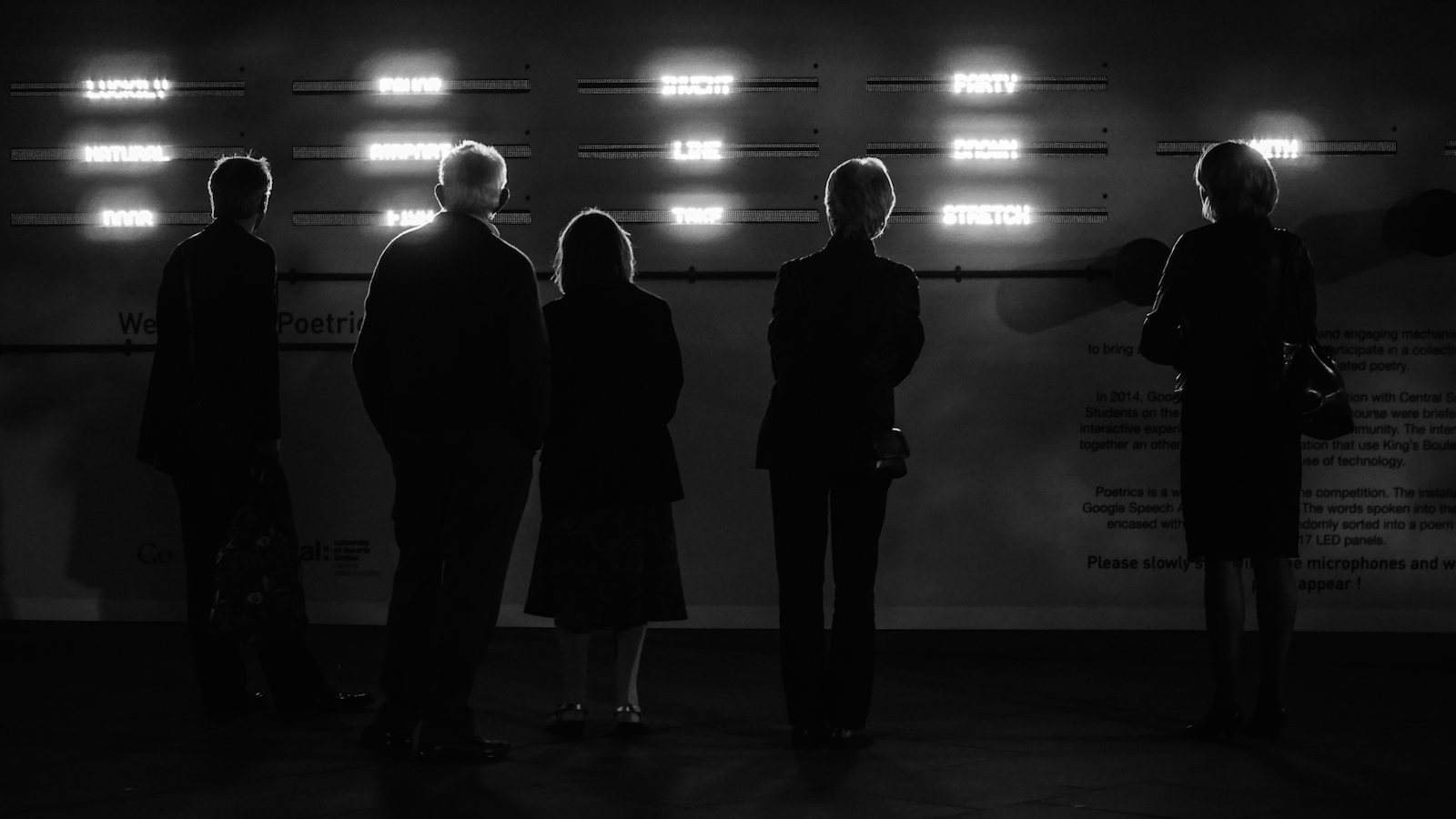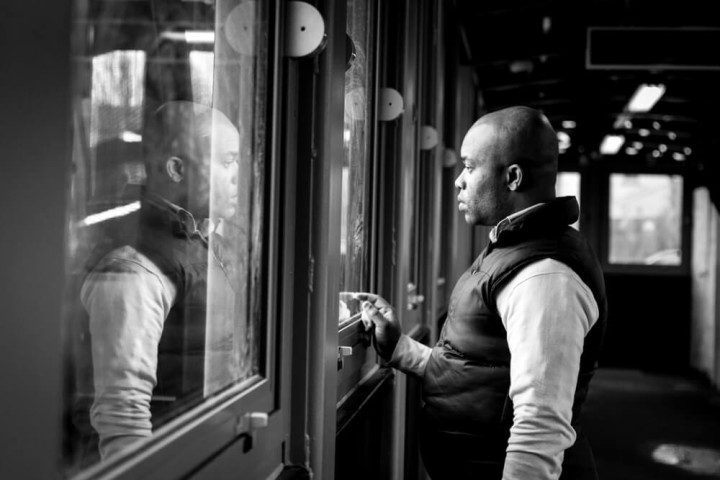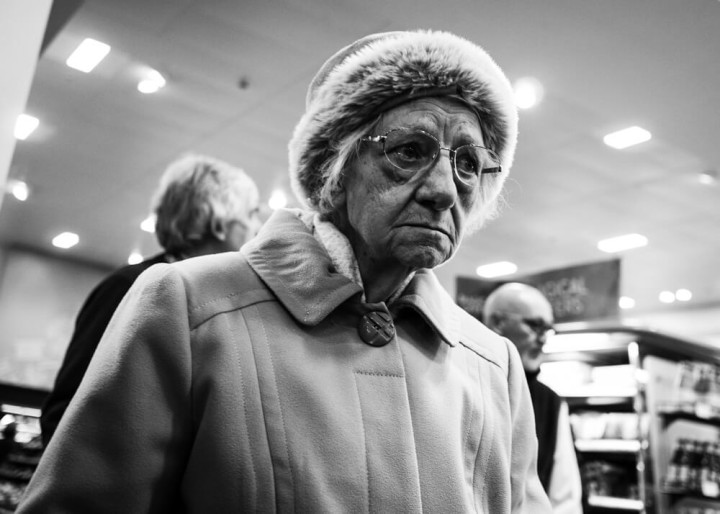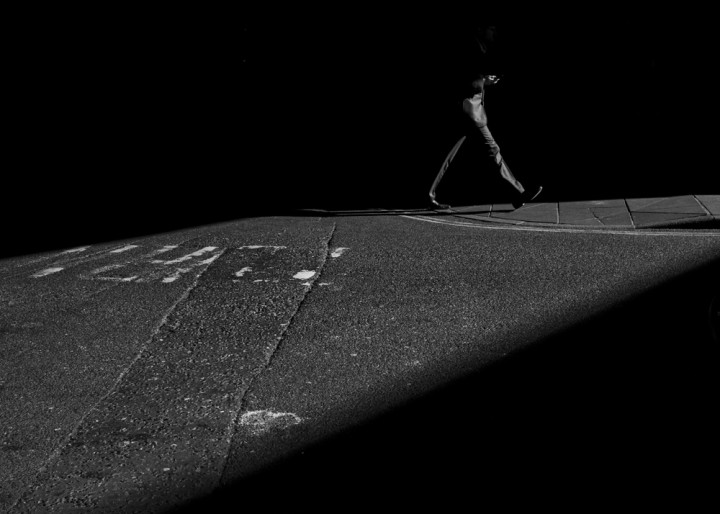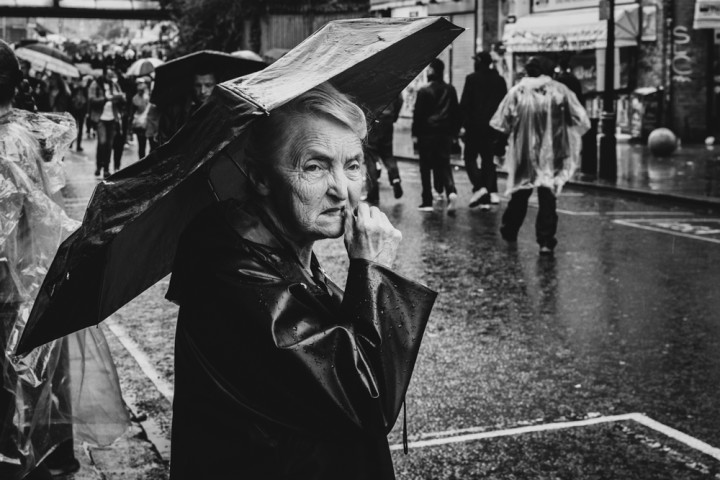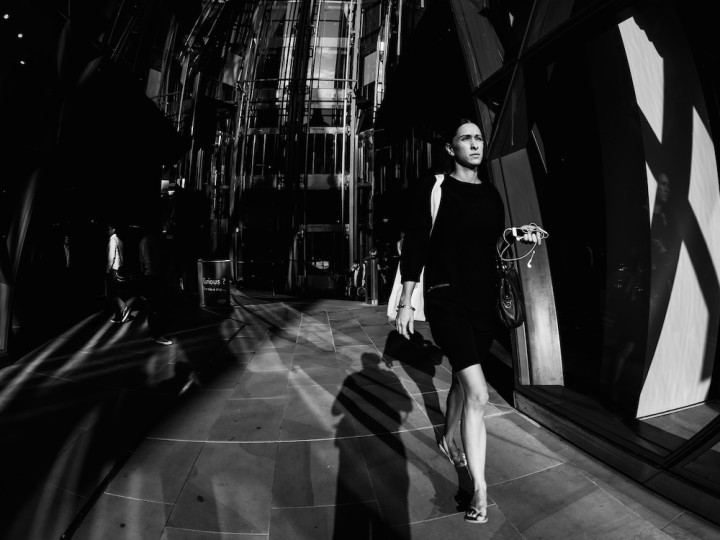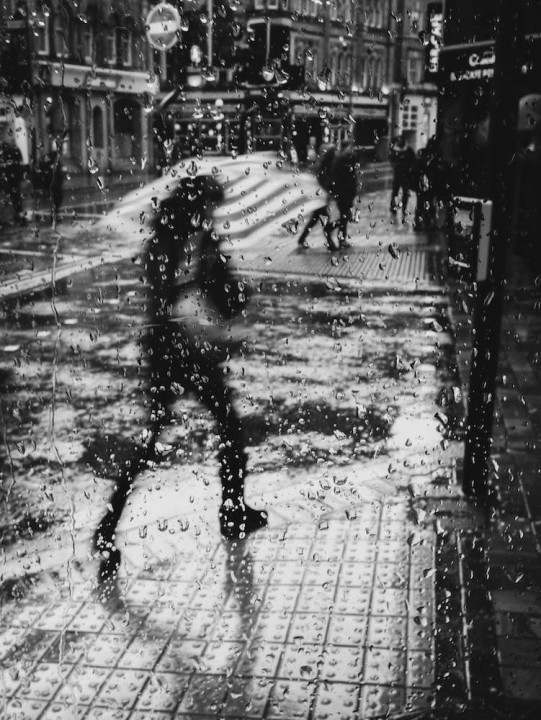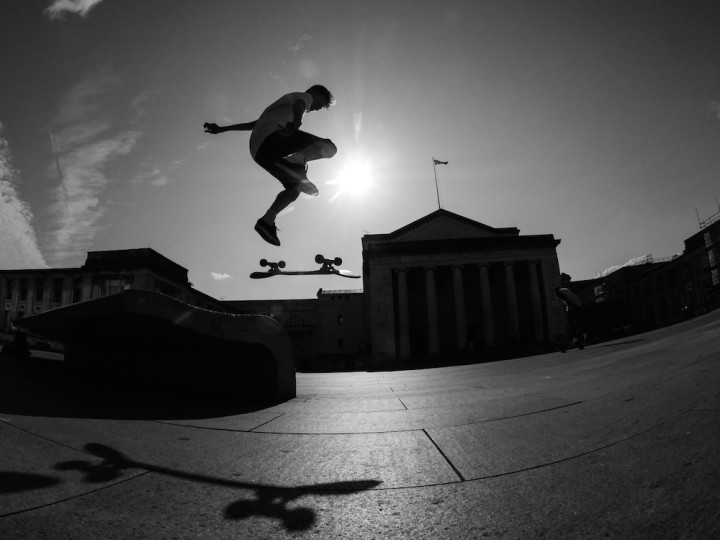Welcome to our series of 100 interviews we will be holding with photographers who use mirrorless cameras for their work! “Switching to a smaller and lighter system” has become somewhat a buzz phrase as of late, but many working photographers take this philosophy seriously. From medical reasons such as resolving back and shoulder pain to the simple realisation that bigger does not mean better, photographers are turning to mirrorless systems now more than ever before.
This week’s interview is with Gagan Sadana, a talented street photographer based in Kent who primarily shoots candid shots in black and white and uses the Lumix GX7 for much of his work. He is both a Panasonic Europe Ambassador and the co-founder of Street Photography International, a collective of street photographers who promote street photography from around the globe.
Visit Gagan’s website and check out his work on Facebook, Twitter and Instagram.
All images in this article are property of Gagan Sadana and are published with permission.
1. Who is ‘Gagan Sadana’ in three simple sentences?
Gagan Sadana is an IT Consultant, who happens to have discovered his passion for street photography in the past two years and looks forward to pursuing and exploring this art and its various aspects. He strongly believes that street photographers can inspire each other and work collaboratively to help bring out Street Photography as a Fine Art. He, along with Alan Schaller, Walter Rothwell, Ronya Galka and Reuven Halevi, has created Street Photography International with the sole purpose of promoting street photographers from around the world.
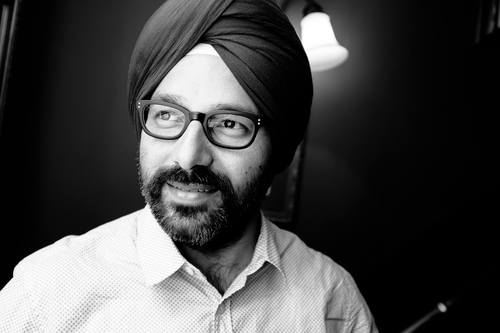
2. You are a professional street photographer. Do you remember the first street picture you took that made you decide that this was the genre you wanted to pursue?
Yes, it has to be a photograph of a gentleman I took last year at the Gravesend railway station. I remember walking up the railway bridge to find this gentleman right in the middle of the bridge peering out onto the tracks. The light was amazing and the overall atmosphere was very captivating. This person looked so deep in his thoughts that he didn’t notice me coming onto the bridge. I was quick to take the shot, as I knew it probably won’t be long, before he realizes that I was standing there with my camera. This photograph is my all time favourite and is a proof that in street photography, you don’t know what you will find and where. From that point onwards, I knew that I would pursue this genre with my heart and soul. And I am glad that I made that decision.
3. Looking through your portfolio, your trademark style seems to be strong contrast with a single human subject. How did you come to embrace this style?
My photography style is a mix of influence of the work by other street photographers, whom I admire, and a reflection of me. I am an observer of people, before I started photography and actually even now, I can happily sit somewhere and just observe how people interact with each other. At any time, if you look at a group of people, you’ll mostly find a few who stand out from the crowd, or are just different in their quirks or attitudes.
This photograph of an elderly woman is one of my favourites. I took this photo in the second week of December, when most of the people are generally joyous. But when I looked at her, it was her eyes that caught my attention. I definitely don’t know what was going on in her mind, but it leaves a question in the viewers’ minds and this photograph makes you think.
Photography is all about light, isn’t it and street photography is about people. And as a street photographer, I always like to use the right balance between light and people to capture ordinary and extraordinary scenes of our daily life. I took this shot just outside the London Borough Market, I could see that the light on that particular spot was naturally creating a strong contrast. I just had to compose and patiently wait for the right character to walk through.
4. You primarily shoot in black and white. Was this a conscious choice or did it happen naturally? Are there situations where you would choose colour over black and white?
In most cases, I feel colours are too complicated and they can be distracting. Black and white is much better in bringing out the emotions vividly and helps keep the focus on the subject. Hence, most of my work is in black and white. Though there are some scenes that would only work in colour and I do have 6-7 coloured shots in my portfolio.
5. Do you ever interact with your subjects? Why or why not?
If I was doing street portraiture, I would probably interact with my subjects, introduce myself and take a portrait, but I don’t do street portraiture. For me street photography is about unposed shots, and that is just my preference. I am also an introvert, and that generally means that I would be more than happy to have a conversation with a stranger, but would rarely be the one to start the conversation.
6. You chose the Lumix GX7 as your main camera. How did you first discover the MFT system? What are the features on this series of cameras that you find particularly useful for street photography?
I came across an MFT camera (Lumix GX7) last year while I was attending a workshop by Panasonic. As a DSLR user, MFT was straightaway impressive, but I particularly liked how quiet and compact the MFT cameras are. Yes, I have captured great shots using my DSLR but I didn’t realize what I was missing until I started using Lumix GX7. Using an MFT camera has helped me get close to my subjects and they are really quiet. It is important to mention that I use a 20mm lens so I have to really close if I want my subject to fill the frame. I haven’t used my DSLR at all since I switched to using a Mirrorless camera a year ago. I firmly believe that switching to a mirrorless camera was a game changer for me as a street photographer.
7. What are your go-to lenses for the system?
I am one camera, one lens person and I only own Lumix 20mm F 1.7, which I have successfully used to capture photographs since last one year. Recently, Panasonic provided me with a Fisheye lens and I thoroughly enjoyed using it. It is always good to try new things, different perspective and using a Fisheye lens has proved to be really beneficial due to the ultra wide viewing angle.
8. Is there anything you’d like Panasonic to improve about the next GX series camera?
As a street photographer, GX7 is more than sufficient for me. There are some really good features in GX8 and G7 like 4K photo, which I think is a very impressive feature. It allows photographers to capture 30 frames per second, wherein each frame, can be saved as 8MP photo. This gives the capability to easily capture a decisive moment. Recently, Panasonic has introduced a Post Focus function, which enables the camera to shoot at a different focus distance, and after shooting in Post Focus, one can choose a focus point and save the image. It is a new feature and very promising.
9. What does the town of Gravesend (Kent) mean to you and how has living there influenced your street work?
Gravesend is a historic riverside town, there is always something happening around promenade which gives a lot of opportunities for photographers. I think being in Gravesend laid the foundation for me to venture out as an amateur photographer and try landscape and ‘people’ photography. It was only after I tried various things, including a bit of studio photography that I realized that my interest is in doing street photography.
Just a few months ago, I decided to engage more with the local community. I recently did a talk on candid street photography at a local tea room. The main purpose was to inspire non-photographers and photographers to try street photography, and also show my work.
I also recently exhibited at the Showcase Kent exhibition, which featured photographers from Gravesend and nearby towns. It was a great success and had a lot of good comments from people who visited the exhibition.
10. On an ordinary day, how many shots do you usually bring home? Out of those shots, how many would you potentially share online or include in a portfolio?
On a typical day, If I go out to shoot it is typically after work and I usually capture 50-100 shots. The main purpose is to capture a story, but I take some shots to warm up and then a few to check how I can make the best use of the available light. I tend to find a spot and wait there for the right moment instead of just walking like a wanderer lost in a city. Scenes are always evolving, it is a matter of being patient and observant.
11. You often hold street photography workshops across the UK. What can participants expect to take home from these workshops?
I do a lot of workshops in partnership with Panasonic which can be anywhere in the UK. I also run workshops on my own, which are held in London. The aim of the workshop is to share what I know about street photography and what is that I look for when I am out on a street.
Street photography is a lot about ‘why’ instead of ‘how’. My workshops are like exploring the city with a different eye and considering ‘why’ what we are seeing is worth capturing. It also gives attendees the opportunity to see how I capture photographs. During the day, there are always conversations happening around various aspects of street photography.
I would like to extend my personal workshops to other cities and towns also. I think cities other than London are much more interesting and would offer something different, although there might be some challenges as people in London and other big cities are quite used to see photographers but in smaller towns, a photographer will easily get peoples attention.
12. What advice would you give a budding street photographer?
Be confident when out taking photographs. Take time to observe and don’t take random shots for the sake of sharing it online. And after you have out your work out there, It is important that you don’t get disappointed by someone’s criticism of your style or work. It takes time to develop your own unique style so keep experimenting. Don’t worry about the rules and the blogs about them. Walk slowly and observe. Always remember, a photograph of a street is not street photography; it is about people.
Do you have any questions for Gagan about his street work or Lumix cameras? Feel free to visit his website and leave him a comment below!
